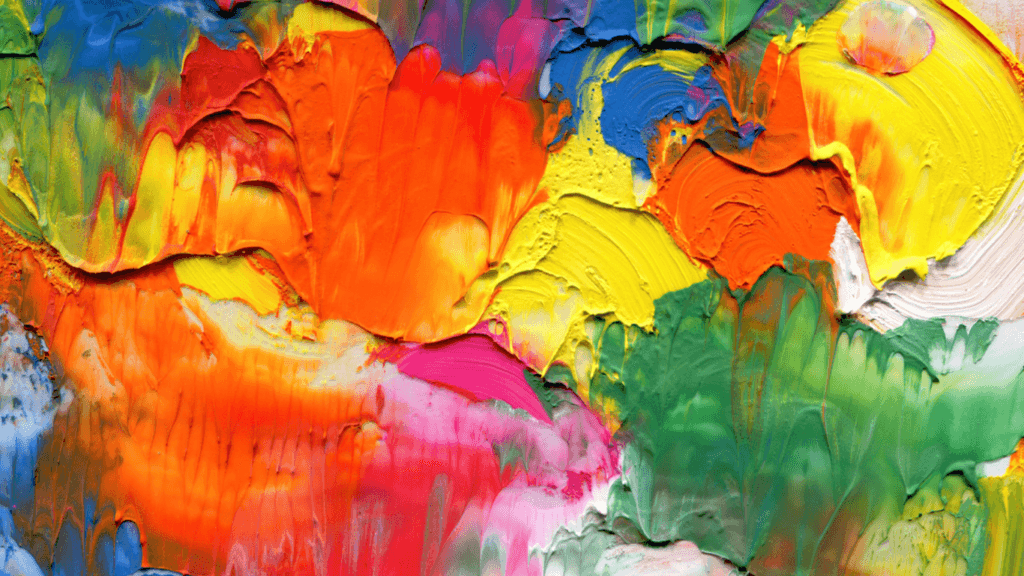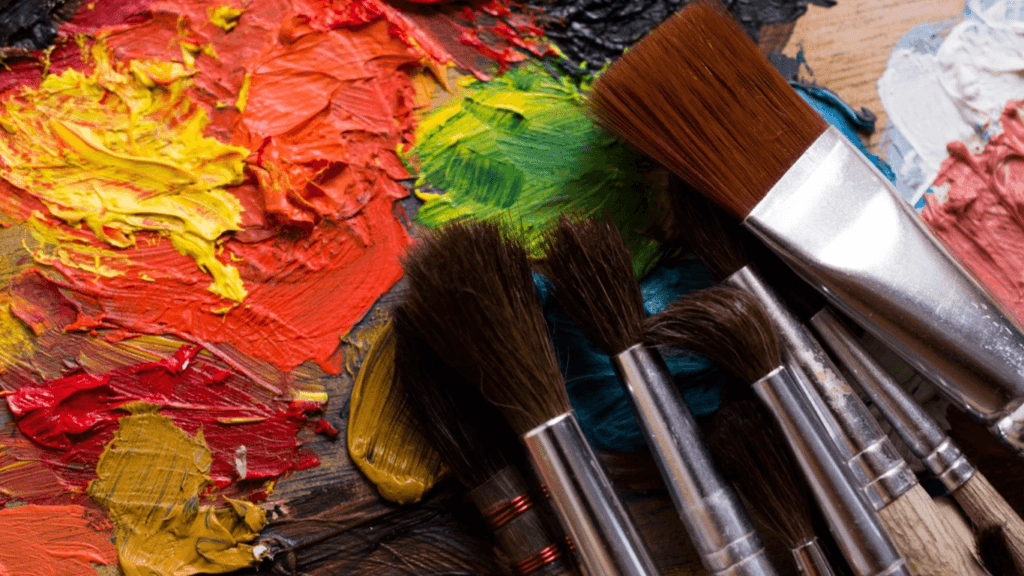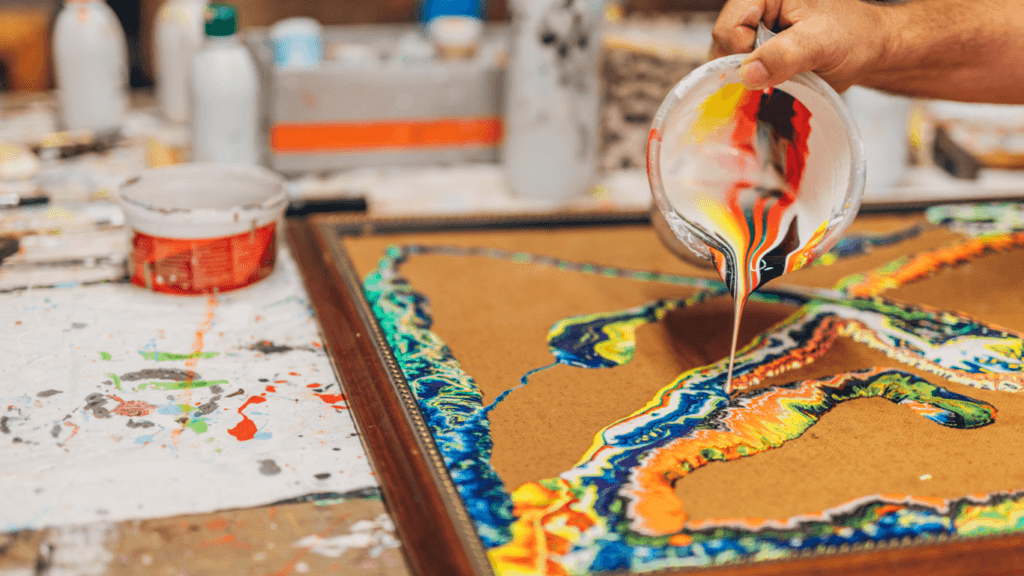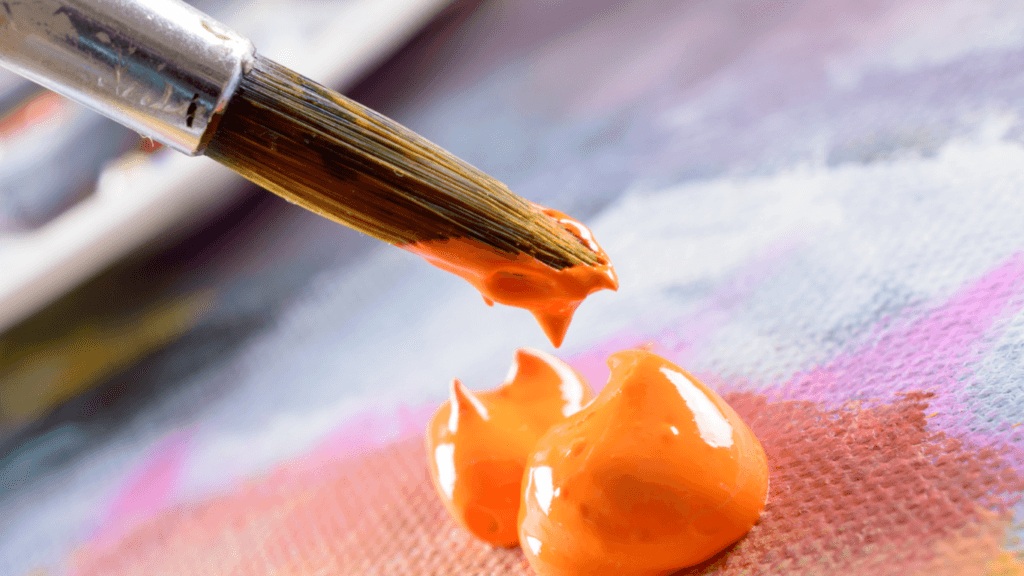Intro - Acrylic Painting Techniques
Acrylic painting is a popular medium among artists due to its versatility and vibrant colors. With the right techniques, acrylic paint can be used to create a wide range of effects, from smooth and blended to textured and layered.
In this blog, we will talk about popular ways to paint with acrylics and show you how to use them to make amazing art.
My Personal Experience
I started painting when I was thirty years old because a man’s art on TV inspired me a lot. I didn’t know that the man who made me passionate about painting was Bill Alexander. He had a TV show called “The Magic of Oil Painting.” Intrigued, I decided to give it a try and started painting with oil-based paints, as they were my main source of inspiration. However, I soon realized that working with oils required a great deal of effort and patience. While the end result could be breathtaking, I personally found that I could create equally beautiful art (in my opinion) using a much simpler and less time-consuming medium. That’s when I discovered acrylics!
Why Acrylic Paint?

Acrylic paint is a water-based medium that dries quickly and is known for its vibrant colors. It can be used on a variety of surfaces, including canvas, paper, wood, and even fabric. Acrylic paint dries quickly, unlike oil paint. This makes it a favorite for artists who work fast and like to add many layers.
The Adaptability of Acrylic Paint
One of the main reasons why acrylic paint is so popular is its adaptability. It can be used in a variety of ways, from thin washes to thick impasto techniques. It can also be mixed with other mediums, such as gels and pastes, to create different effects. This versatility allows artists to experiment and find their own unique style.
The Vibrant Colors of Acrylic Paint

Acrylic paint is known for its bright and bold colors. Unlike watercolors, which can appear muted when dry, acrylic paint retains its vibrancy even after drying. This makes it a great choice for artists who want to create eye-catching and colorful pieces.
Popular Acrylic Painting Techniques
Acrylic painting techniques are the reason y’all are here, right? Let’s go over a few popular ones:
Wet-On-Wet Technique
The first of a few acrylic painting techniques we’ll go over is the wet-on-wet technique, which involves applying wet paint onto a wet surface. This creates a soft and blended effect, perfect for creating backgrounds or adding depth to a painting. To achieve this technique, simply wet your canvas with a spray bottle or a damp brush before applying the paint.
Dry Brush Technique

The dry brush technique involves using a dry brush to apply paint onto a dry surface. This creates a textured and scratchy effect, perfect for creating fur, hair, or other details in a painting. To achieve this technique, use a flat or filbert brush with very little paint and drag it lightly across the surface.
Sgraffito Technique
The sgraffito technique involves scratching into a layer of wet paint to reveal the layer underneath. This creates a textured and layered effect, perfect for creating details or adding interest to a painting. To achieve this technique, use a palette knife or a pointed tool to scratch into the wet paint.
Palette Knife Technique
The palette knife technique involves using a palette knife to apply paint onto a surface. This creates a thick and textured effect, perfect for creating impasto paintings. To achieve this technique, use a palette knife to apply thick layers of paint onto the canvas, and then use the edge of the knife to create texture and details.
Pouring Technique

The pouring technique involves pouring paint onto a surface and allowing it to flow and mix together. This creates a unique and unpredictable effect, perfect for creating abstract paintings. To achieve this technique, mix your paint with a pouring medium and pour it onto the canvas, tilting the canvas to create different patterns and effects.
New Acrylic Painting Techniques To Try
As acrylic painting continues to evolve, new techniques are constantly being discovered and developed. Here are some of the latest techniques that are gaining popularity among artists.
Acrylic Skin Technique
The acrylic skin technique involves creating a thin layer of paint on a non-stick surface, such as a silicone mat or a plastic sheet. Once dry, the paint can be peeled off and used as a unique element in a painting. This technique is great for creating abstract pieces or adding texture to a painting.
Acrylic Pouring With A Straw
The acrylic pouring with a straw technique involves using a straw to blow and manipulate the paint on the canvas. This creates a unique and organic effect, perfect for creating abstract pieces or adding interest to a painting. To achieve this technique, mix your paint with a pouring medium and use a straw to blow the paint around on the canvas.
How to Get Started With Acrylic Painting

If you’re new to acrylic painting, here are some tips to help you get started.
Invest in Quality Supplies
To achieve the best results, it’s important to invest in quality supplies. This includes artist-grade acrylic paint, brushes, and a variety of surfaces to paint on. It’s also helpful to have a palette knife, a spray bottle, and other tools to experiment with different techniques. Find links to the best places to shop for quality art supplies at the bottom of the page!
Practice and Experiment in Acrylic Painting Techniques
As with any art form, practice makes perfect. Take the time to experiment with different techniques and find what works best for you. Don’t be afraid to make mistakes and try new things – that’s how you’ll discover your own unique style.
Take Inspiration From Others
There are countless resources available for acrylic painting techniques, including books, online tutorials, and workshops. Take advantage of these resources and learn from other artists. You can also join online communities or local art groups to connect with other artists and share tips and techniques.
Conclusion
Acrylic painting is a versatile and vibrant medium that offers endless possibilities for artists. In my personal artistic journey, I have found acrylic paint to be a much better fit for me. To each their own, but by learning and experimenting with different techniques, you can create stunning and unique works of art. So grab your supplies and start exploring the vibrant world of acrylic painting today!


